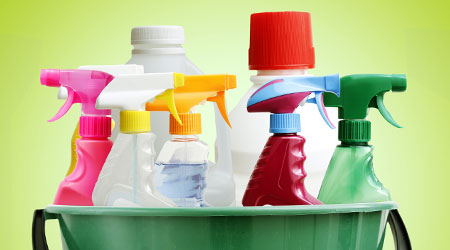
With bio-based surfactants already here and biosurfactants on the rise, how will facility managers sort through the choices? Or, to look at the bigger, existential question, will they even care?
“In the grand scheme of things, if all the cleaning chemicals in the world produced in a year went straight into the ocean, they wouldn’t even amount one drop in a swimming pool,” says Michael Knight, vice president of operations at Better World Companies, Houston. “When compared to volume of unprocessed sewage going into the environment each day, fussing over the relative impact of one cleaning formula over another hardly seems like an efficient use of resources.”
Luckily there are entities fussing over the details, so individual decision makers don’t have to. Specific surfactant formulations are too granular to come out of building certification qualifications like LEED or the WELL Building Standard. But third-party product certifications like the Environmental Protection Agency’s (EPA) Safer Choice, GreenSeal, and UL Ecologo already define and create criteria for these products.
The EPA’s Safer Choice Standard list includes an estimated 400-500 approved surfactant choices, but recently proposed changes demanded a deeper understanding about these chemicals. The changes will require aquatic toxicity data for at least one trophic level for surfactants (or a close analog).
“That particular analysis is new,” says Shari Solomon, Esq. CIEC, president, CleanHealth Environmental, LLC, Silver Spring, Maryland.
Solomon is also intrigued by other proposed changes to the Safer Choice Standard, including renaming it the ‘Safer Choice and Design for the Environment Standard’. There will also be new on-site audit requirements and updated packaging requirements.
But she is especially interested in the possible establishment of a Safer Choice Cleaning Service Certification. This designation would be for cleaning professionals/departments that use Safer Choice-certified products for cleaning and the newly-proposed Design for the Environment-certified products for disinfecting. Commercial cleaning service providers, facility owners, managers, and government entities are providing commercial cleaning would be eligible for this certification.
Even with all the new surfactants and certifications on the horizon, some things remain the same. Yes, cleaning with plant-based or biosurfactants is inherently safer and more sustainable than working with petroleum-based choices. But frontline workers still need training on how and where to use any new products.
For training managers, remember that the label is the law.
“All cleaning products should only be used according to label directions and never be mixed with other cleaning products or chemicals,” insists McFadden. “However, cleaning products made with biosurfactants, or bio-based surfactants are compatible with other cleaning products and can be stored safely with other products in the janitor closet.”
Amy Milshtein is a freelancer based in Portland, Oregon. She is a frequent contributor to Facility Cleaning Decisions.
Why Bio-Based Chemicals are Gaining a Following

 The Down and Dirty on Cleaning in Virus Season
The Down and Dirty on Cleaning in Virus Season How Surfactant Use is Expanding in Commercial Cleaning
How Surfactant Use is Expanding in Commercial Cleaning